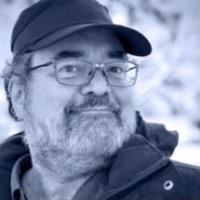-
Posts
10,718 -
Joined
-
Last visited
-
Days Won
209
-
Your experience trying to get clean wide-angle or surround ambiances while doing production sound on an indie movie is pretty much how it always went for me. The locations were almost never suitable for this kind of recording at any time of day, and certainly not when the rest of the crew was there. For this to really work there has to be some sort of buy-in and support from production (and post, if they have been hired while you are still shooting). There are some useful ambiances and sfx you might could get after the rest of the crew has left a location, but on a union job your extra work has to follow the contracted work rules and hours. On non-union indies I spent a lot of free time trying to get extra sound after hours but would have to admit that we often weren't very successful. If there are specific requests from post then you can take those to production and get yourself on the official shooting schedule. Doing this will get you AD Dept support and maybe even grip assistance as well. That's the best way to do it and get what post actually wants.
-
For sure exposure to solvents can cause plastic breakdown, but how many soundies here are using solvents that way? Years ago Dan Dugan used to speak of the breakdown that would happen to the rubber gasket that surrounds the deck of reel to reel Nagra IVs onward as "gasket cancer". He thought it was caused by getting both the head cleaner and the rubber cleaner we used on the pinch roller on the gasket, as well as sweat. I know the deterioration of mine started on the right side near the pinch roller. So maybe I got something on the cables w/o realizing it, and over time....
-
I was wondering if the mystery of why some lav mics deteriorate this way and others (same make/model/age) don't could be partly down to how the plastic on the cables is acted on by some people's sweat and skin oil (and not others)?
-

The toxicity of Facebook sound groups
Philip Perkins replied to Michael Wynne's topic in General Discussion
I feel sorry for newbies who are asking genuine questions via FB, since they open themselves up to torrents of abuse from disaffected and unhappy users looking for a way to vent. There are a lot of people who use FB (etc) as a kind of scream therapy I guess. Trying to make yourself feel better by putting someone down for not knowing as much as you is an addictive fool's game. I hope those newbs find their way to moderated forums like this one or Gearspace. -
Gotta ask....1 post...are you a troll?
-

Biscuit Rigs on the rise? Challenges & Approach
Philip Perkins replied to Michael Wynne's topic in Workflow
That is a scary looking vehicle, with the driver up high like that... This thing is allowed on public roads w/o police escort? I did a great deal of wireless car-to-car back when there was no choice about it and it worked out pretty well. On commercials you always have a big backfield that absolutely HAS to hear every word of the dialog (or pretend that they do between the conversations they are having with each other in the follow vans), so we had transmit even from old school low-boy rigs. At least with this "biscuit" thing there might be fewer clanking chains, less creaking metal than with a trailer? Good question about the lights--are they all inside the picture car? Is the drill for this sort of shot nowadays using TX that can record, with a bag with the RX in the car that is transmitting a monitor mix to the follow vehicles? -
Lighting in particular is in a state of permanent (and expensive) upheaval these days. Be glad that as location dialog soundies you can get along with solid older kit at lot of the time, elsewhere in the audio universe this is not the case at all (as in live sound).
-
The only thing I ever did that helped this issue was to have a very obvious place for the "creatives" to get and return the Comteks, like some sort of multi-bag thing like a closet shoe holder set on a stand right next to their monitor. Having a very visible place for them to return the equipment to when we moved seemed to help a lot, and also pretty much took care of the hassle of passing them out one at a time. This thing didn't 100% prevent loss, but it cut it way down and speeded up the location moves. Comteks are a form of expendable, just like lav mics put on talent: sooner or later you are going to lose a few and you want to be ready to charge the production for what a replacement costs.
-
The 664 may have been on a table, but if it was in a bag the power cable could still be stressed in some way. Could your power switch be worn or dirty? Could you have accidentally not firmly moved the switch completely to the ON position when you powered up that day? I would consider using some contact cleaner on that switch, and on the power connector. I have had power intermittents caused by not seating the removeable IEC end of the AC power cable all the way into the power supply, or it getting loose.
-

Noise cancelling hedphones advise wanted.
Philip Perkins replied to Bouke's topic in General Discussion
Bose over-the-ear types have worked for me. Not great sounding headphones but ok for listening and working on a plane. No NR headset reduces close conversation (or baby-crying) very much, but they can reduce the continuous engine+air roar. After a period of time you'll want to take a break from them, since there is something tiring about being under them for hours on end. -
Very nice, well done!
-
yeah, HBTY and thanks, Jeff!!!!!
-
These can be helpful, but I used my SM7 just fine for years before they came along.... Mine work more with our ribbons...
-

The end of fuel generators is near (isn’t that great?!)
Philip Perkins replied to Fred Salles's topic in Equipment
These power units are pretty darn expensive....




